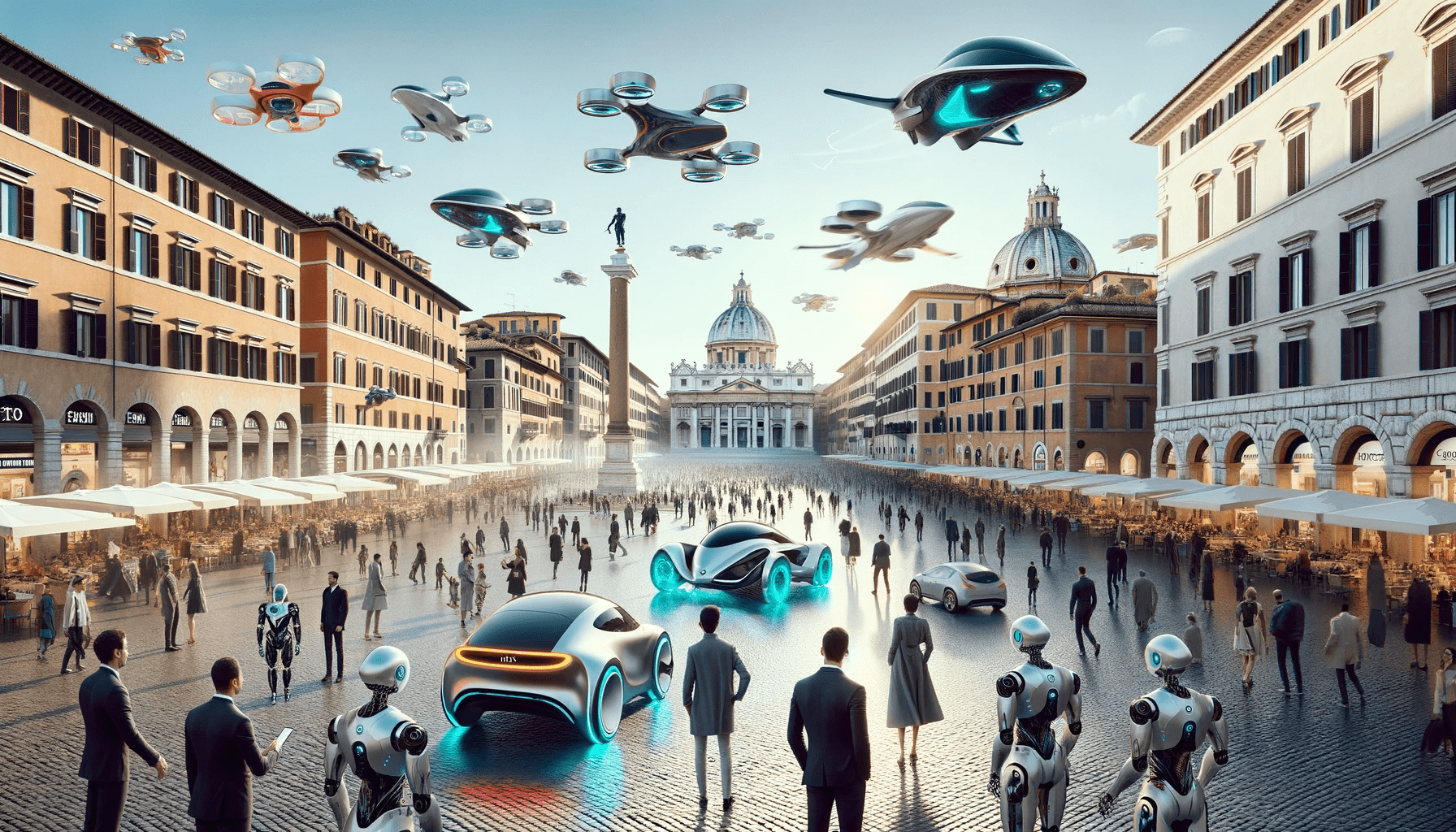Table Of Content
Imagine Rome, the eternal city, turning of the calendar to 2100. This is a place where history and the future merge seamlessly, creating a landscape that celebrates its rich past while embracing the marvels of technology. Picture Rome with its iconic landmarks now standing amidst robots, flying cars, AI amenities, and towering new skyscrapers that offer a stark yet harmonious contrast to its gold historical buildings.

Rome in 2100 will be A Fusion of Ancient Glory and Futuristic Innovation!
Futuristic Rome’s Top 10 Landmarks and Their Transformation
- The Colosseum: This ancient stadium stands tall, retaining its old glory, but now offers virtual reality shows to its visitors through which they can see ancient history come alive in 3D.

- St. Peter’s Basilica: This holy site is enhanced with holographic presentations describing its history, while AI-guided tours explain in detail the various marvels of its architecture.

- The Pantheon: The Pantheon, preserved in its majestic form, now features an interactive AI dome that projects the night sky as seen throughout different eras.

- The Roman Forum: Once the heart of ancient Rome, the Forum is now a site where robotic guides offer insights into historical political debates and events.

- The Trevi Fountain: now enhanced with the addition of ecological and energy-efficient lighting, along with a host of augmented reality elements that tell tales from Roman mythology.

- The Spanish Steps: surrounded by drone-operated cafes and boutiques, blending the old-world charm with modern retail experiences.

- Vatican City: has retained its religious importance while also incorporating advanced techniques in preservation for its artifacts and AI-powered interactive religious services around the world.

- Castel Sant’Angelo: This historic castle now includes a high-tech museum with virtual reality tours, showcasing Rome’s transformation over the centuries.

- Piazza Navona: Piazza Navona has evolved into a hub for cultural exchange, with AI-driven art installations that reflect the artistic evolution of Rome.

- Campo de’ Fiori: This bustling marketplace now features automated vendors and smart kiosks, providing a futuristic shopping experience amidst historical ambiance.

The Rome of 2100 is a reflection of the beautiful mix of old and new, wherein every building has been smoothly merged with advanced technologies. This perfect marriage not only maintains the glorious history of the city but also ushers in a new beginning for technology and culture.

In Rome 2100, past and future coexist in harmony, completing each other with unparalleled results for both residents and tourists.

